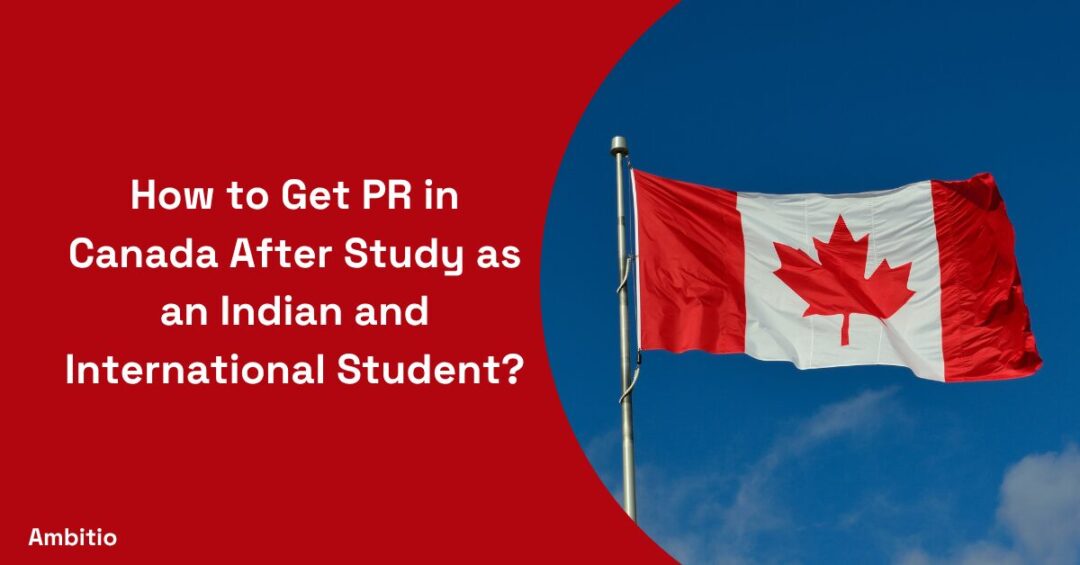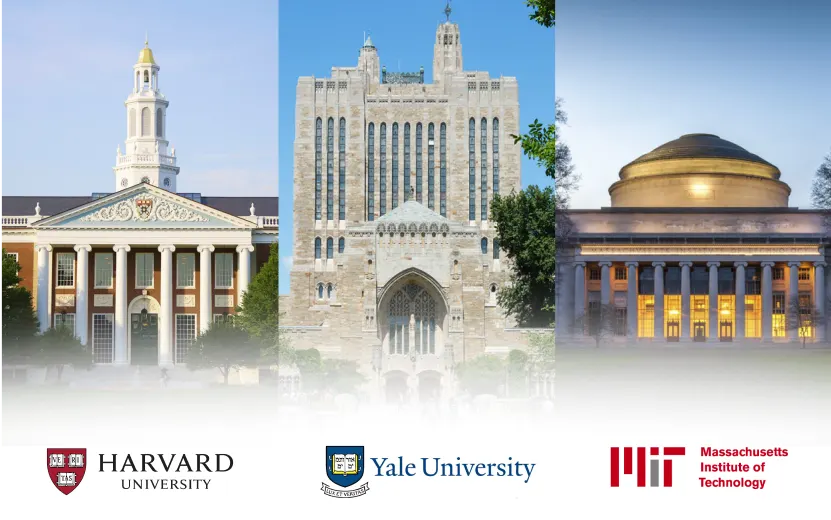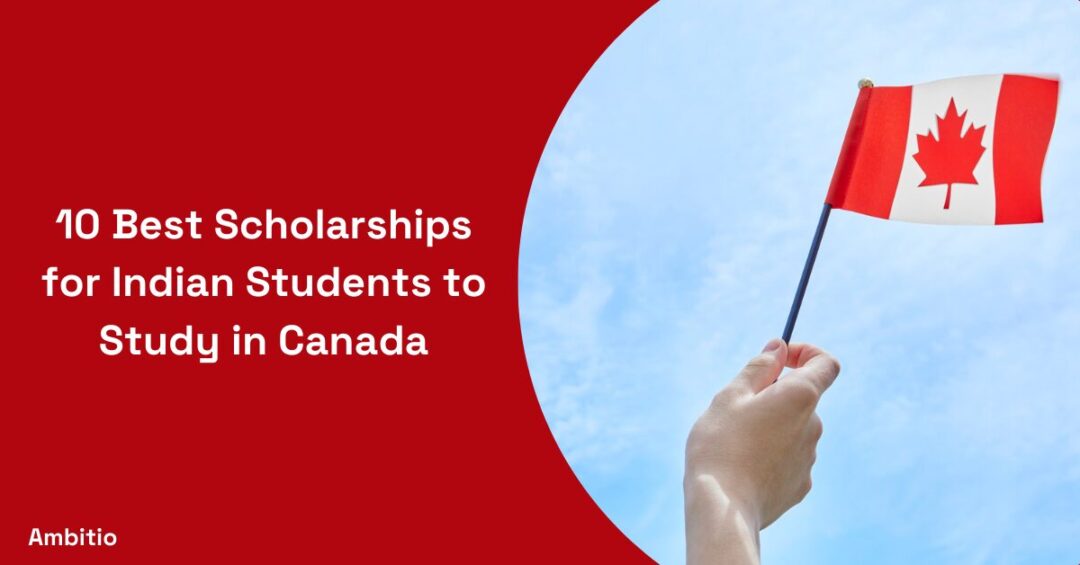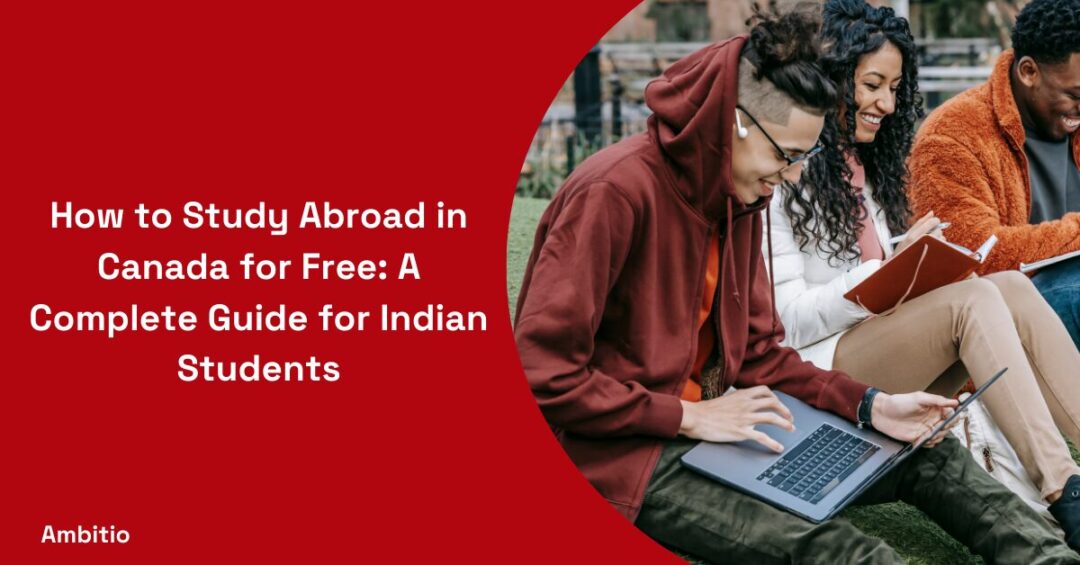17 June 2025
5 minutes read
How to Get PR in Canada After Study as an Indian and International Student?

Key Takeaways
- How to get PR in Canada after study involves leveraging programs like PGWP, Express Entry, and Canadian Experience Class tailored for international graduates.
- How to get PR in Canada after study depends on gaining at least one year of Canadian work experience and meeting CRS eligibility through Express Entry.
- How to get PR in Canada after study also includes province-specific options like PNPs that offer direct PR pathways with or without a high CRS score.
Canada remains one of the top destinations for international students not just because of its quality education, but because it offers a clear pathway to becoming a permanent resident. For many Indian and international graduates, the study in Canada dream doesn’t end with a diploma—it begins there.
Canada offers several immigration programs specifically designed to help students transition from a study permit to permanent residence.
Whether it’s through the post-graduation work permit (PGWP), Canadian Experience Class, or the provincial nominee program (PNP), Canada provides various options to gain permanent status and apply for permanent residence and immigrate to Canada.
Understanding these routes early helps students prepare, collect necessary documents like a resume, statement of purpose, IELTS/TOEFL scores, ACT/SAT/GRE/GMAT results, and gather relevant work experience in Canada to improve their chances under the comprehensive ranking system.
What is a Permanent Residence in Canada for International Students?
Fun fact: Over 50% of international students in Canada end up getting invitation to apply for Canadian permanent residence within ten years of graduation!
- Permanent residence allows international students to stay in Canada and settle in Canada permanently with access to healthcare, work rights, and social services study programs.
- PR holders can apply for Canadian citizenship after meeting residency obligations.
- PR is not the same as citizenship, but it provides many similar rights in immigration to Canada.
- Permanent residents cannot vote but can live and work in any province or territory including the Province of Quebec.
- International students must apply for PR through immigration programs like Express Entry, PNP, or Canadian Experience Class.
How to Get PR in Canada After Study as an International Student?
Fun fact: Graduates from Canadian universities score higher in the CRS.
This is due to their Canadian education and work experience!
- Apply for a Post-Graduation Work Permit to gain work experience.
- Use the PGWP to secure a job and work in Canada for up to three years.
- Accumulate at least one year of Canadian work experience to qualify for Canada Experience Class.
- Apply through Express Entry, particularly via the Canadian Experience Class stream.
- Boost your Comprehensive Ranking System (CRS) score with IELTS or TOEFL, Canadian education, and job offers.
Is it Possible to Apply for PR After Study as an International Student in Canada?
Fun fact: Canada includes more than 80 PR pathways available to international students!
- Yes, international students who studied in Canada are eligible to apply for PR through various routes.
- Options include Canadian Experience Class, Provincial Nominee Program, and Federal Skilled Worker Program.
- Completing their studies and gaining work experience in Canada makes graduates eligible for PR.
- Students must switch from a study permit to a work permit, and then apply for PR.
- A strong letter of recommendation, statement of purpose, personal statement and complete PR application helps in faster processing.

| Route | Eligibility Criteria | Key Features | Validity |
|---|---|---|---|
| Canada Experience Class | 1 year work experience in Canadian soil | Fast PR processing | Up to 6 months |
| Provincial Nominee Program | Employer/job offer in specific province | Extra 600 CRS points | Depends on province |
| Federal Skilled Worker | Foreign work experience + IELTS | No Canadian work needed | CRS-based |
| PGWP | Graduation from a DLI in Canada | Open work permit | Up to 3 years |
| Express Entry | Based on CRS score | Multiple PR streams | Points-based |
Provincial Nominee Program and Post-Graduation Work Permit (PGWP): An Overview
Fun fact: Some provinces offer permanent residency even with low CRS scores if you apply through their PNP!
- P.G.W.P allows international graduates to work in Canada without a job offer.
- Provincial Nominee Programs (PNP) are designed to help provinces meet specific labor market needs.
- Students working in a particular province can apply through its PNP.
- Some PNPs are aligned with Express Entry, providing 600 extra CRS points.
- P.G.W.P holders can use their work experience to become eligible for PNP or Canada Experience Class.

| Feature | P.G.W.P | Provincial Nominee Program |
| Requirement | Graduation from DLI | Job offer in province (usually) |
| Work Permit Type | Open | Employer-specific |
| Duration | Up to 3 years | Varies by province |
| PR Pathway | Supports Canadian Experience Class | Direct PR nomination |
| CRS Benefit | Work experience in Canadian soil | +600 CRS if Express Entry aligned |
How Much Canadian Work Experience is Required for Canadian Experience Class Visa?
Fun fact: One year of work experience in Canadian soil equals 12 months of full-time work or 1,560 hours!
| Requirement | Details |
| Duration | Minimum 1 year (full-time) or equivalent part-time |
| Type of Work | Skilled work (NOC TEER 0, 1, 2, or 3) |
| Legal Status | Must be under valid work permit like P.G.W.P |
| Timing | Work must be within 3 years prior to PR application |
| Language | Must meet CLB 7 for TEER 0 or 1, CLB 5 for TEER 2 or 3 |
Eligibility Criteria for Canada PR Process and Temporary Work Permit and Study Permit
Fun fact: More than 75% of international students transition to work permits before applying for PR in Canada!
- Study Permit: Must be accepted by a Designated Learning Institution (DLI), show proof of funds, and pass IELTS or TOEFL.
- Work Permit: Requires a valid job offer, usually through PGWP or LMIA-based employer.
- Canadian PR: Meet CRS cut-off, language scores, and education/work experience.
- Must have at least one year of Canadian work experience for Canada Experience Class.
- Proof of funds and intention to live in Canada are essential in P.R process.
Conclusion
Securing permanent residence in Canada after studying isn’t just a possibility—it’s a realistic goal for any international student in Canada who understands the P.R process well.
From applying for a study permit to transitioning into a post-graduation work permit, gaining valuable work experience in Canadian, and finally achieving Canadian permanent resident status, the journey may seem long but is richly rewarding.
Canada offers several immigration programs including Express Entry, Provincial Nominee Program, and the Canada Experience Class to help you get PR in Canada.
Programs like PGWP allow international students to gain relevant Canadian work experience. The CRS system rewards candidates who studied and worked in Canada, giving them a competitive edge.
It’s essential to prepare early—whether it’s collecting your resume, statement of purpose, or IELTS/TOEFL/GRE/SAT/GMAT scores. Understand the eligibility criteria, target a province, and plan your work in Canada carefully.
There are many pathways for international students to settle in communities across Canada. If you want to become a permanent resident, stay focused, organized, and proactive.
Know how to get PR with Ambitio Elite. Canada gives not just an education, but a pathway to becoming a permanent part of its vibrant, multicultural fabric. It’s more than a degree; it’s a ticket to build your dream life in Canada.
FAQs
How to get PR in Canada after study as an international student?
How to get PR in Canada after study as an international student involves applying through Express Entry, PNP, or Canadian Experience Class after meeting work and language requirements.
Is PGWP necessary in how to get PR in Canada after study?
Yes, PGWP is crucial in how to get PR in Canada after study because it provides valuable Canadian work experience needed for PR eligibility.
How to get PR in Canada after study without a job offer?
How to get PR in Canada after study without a job offer is possible through certain PNP streams and Express Entry categories that focus on education and language scores.
Does studying in Quebec affect how to get PR in Canada after study?
Yes, how to get PR in Canada after study in Quebec involves applying through Quebec’s own immigration program, which is separate from the federal Express Entry system.
How much does Canadian education help in how to get PR in Canada after study?
Canadian education adds significant CRS points, supporting how to get PR in Canada after study when combined with work experience and language proficiency.
Can IELTS improve how to get PR in Canada after study?
A high IELTS score greatly enhances how to get PR in Canada after study by increasing your ranking in the Express Entry pool.
What is the fastest route in how to get PR in Canada after study?
The fastest way in how to get PR in Canada after study is often through the Canadian Experience Class stream within Express Entry after gaining one year of skilled work experience.

You can study at top universities worldwide!
Get expert tips and tricks to get into top universities with a free expert session.
Book Your Free 30-Minute Session Now! Book a call now




























